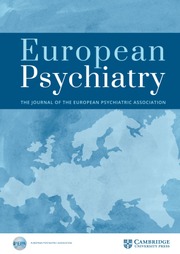Article contents
Bruxism as a Consequence of Chemotherapy?
Published online by Cambridge University Press: 23 March 2020
Abstract
Bruxism is a syndrome with uncertain etiology but with proposed factors: psychosocial, peripheral and central. Treatment is also controversial and one of the options focuses in GABA theory and regularization of ion channels. Xelox (capecitabine + oxaliplatin) and bevacizumad is indicated for metastatic colorectal cancer, being oxaliplatin the most neurotoxic agent (acute syndrome and/or a chronic sensory neuropathy). Acute neurotoxicity is very frequent and it is a sensory and/or a motor toxicity (as tongue tingling or jaw spams). The proposed pathogenesis – neuronal hyperexcitability due to alterations of voltage-gated ion channels – is supported by mechanism of action of some treatments.
Review different causes of bruxism.
Description of a clinical case.
This is a story of 76-years-old man in treatment for metastatic colon cancer that developed toxicity: nauseas (treated with haloperidol), bruxism and gingival atrophy. He was referred to psycho-oncology by involuntary movements of mouth and trunk. The patient complained of sadness, anhedonia and insomnia since recurrence of cancer and related the movements with CT. At observation he was anxious, tearfulness and agitated. He was treated for a depressive episode, but the doubt remained about involuntary movements: haloperidol was a confounding factor for oxaliplatin acute neurotoxicity, also aggravated by psychic and peripheral factors.
The authors believe that bruxism is linked to CT in a very complex relation that includes psychic, peripheral and central factors. Psychiatrists need to keep attention to the patient as a whole, not being seduced by easy answers like psychosocial factors.
The authors have not supplied their declaration of competing interest.
- Type
- e-Poster Viewing: Oncology and psychiatry
- Information
- European Psychiatry , Volume 41 , Issue S1: Abstract of the 25th European Congress of Psychiatry , April 2017 , pp. S668
- Copyright
- Copyright © European Psychiatric Association 2017
- 2
- Cited by



Comments
No Comments have been published for this article.